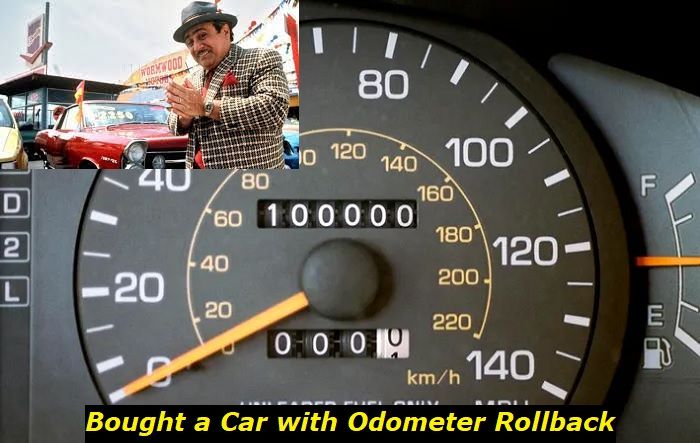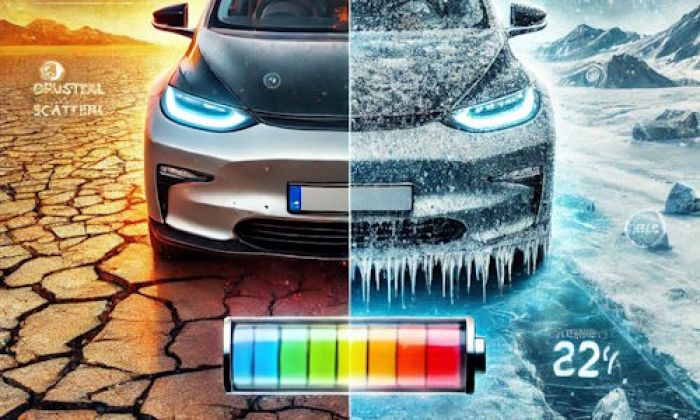The "Check Charging System" light on the dashboard of the Honda Odyssey can mean a lot of things. The problem can range from a simple glitch in the electronic components of your minivan or it may signal a serious issue that may leave you stranded on the side of the road. With that, there are times when it can be tricky to diagnose because it may be electrical or mechanical in nature. There are also instances when it's both.
Charging system problem message highlights
- Common reasons:alternator issues, dying battery, wiring problems
- How to fix:check the battery, check the alternator, take it to a good mechanic
- Possible consequences:the car may eventually refuse to start
- Priority level:High
- Can you drive?Yes, but not long
- DIY repair:Possible, sometimes complicated
- Repair price range:$150-$450

Fried Electronic Battery Sensor
The electronic battery sensor clamped in the negative battery terminal of the Honda Odyssey is a device that helps monitor the amperage of the battery. Most Honda owners who have encountered the "Check Charging System" warning light have traced back the source of the problem in the circuitry of this unit.
The sensor works by sending a signal to the car's computer to indicate how much power is being drawn from the battery. If the sensor detects that the battery is not receiving enough charge, it will trigger the warning notification on the dash of the minivan.
There are several reasons why a battery sensor may fail, including loose battery terminals, a dead battery, or a faulty sensor itself. Therefore, before anything else, make sure that the connections are okay and that the battery is still working well.
Should the problem persist, disconnect the sensor from the negative battery terminal and detach the wiring harness connected to it. Open the plastic casing of the electronic battery sensor to check if its circuits have been fried.
If you detect signs of shorting in the circuitry of the sensor like burn marks on the metal and plastic components, melted plastic parts, a faint smell of burnt plastic, soft crackling sounds, or pale smoke coming from it, these are indications that the sensor is already damaged and needs to be changed.
One more way to check if the sensor is still functioning well is via a multimeter. Use it to test the voltage at the sensor's output terminal. If the resulting voltage is below 12 volts, it indicates that the sensor is not receiving enough power from the battery and needs to be replaced.
Faulty Wiring
Various wiring issues are oftentimes the culprit in many electrical issues found in a vehicle. If the wires are not properly installed or connected, they can create all sorts of trouble ranging from charging problems, sparking, and short circuits to complete loss of power.
When diagnosing the reason for the "Check Charging System" light in your Honda Odyssey, pay special attention to the harness of the battery sensor because that's where the problem usually happens, too.
Several symptoms can indicate a problem with the wiring in your vehicle. If you notice any of them, it's a good idea to have your car checked by a professional.
Flickering lights are often caused by a loose connection somewhere in the electrical system. It could be a sign of a serious problem, so it's best to get it checked out as soon as possible.
Then, bad wiring or a loose connection can cause a faulty connection between the battery and the rest of the electrical system. This will prevent the battery from properly supplying power to the electrical components of the vehicle.
Likewise, if you hear strange popping or crackling noises coming from your van, it could be due to the same problem. This is especially true if the noise occurs when you turn on or off a specific appliance or electronic device in your vehicle.
Corrosion is one of the most common causes of electrical problems in vehicles. If you suspect that the wiring in your car is corroded, there are a few ways to confirm your suspicion.
Take a close look at the wires themselves first. If they appear to be discolored or have any sort of build-up on them, they're likely corroded. You can use a wire brush to clean off any corrosion that you find. Once the corrosion is gone, you should be able to reconnect the wires and get your electrical system back up and running properly.
Next, you can use a voltmeter to test the continuity of the wires. If the voltmeter indicates that there is no continuity, that means that the wire is corroded and needs to be replaced. To do this, set the voltmeter to the resistance setting. Following that, touch one lead of the voltmeter to one end of the wire you want to test. After that, attach the other lead of the voltmeter to the opposite end of the wire.
If the voltmeter indicates that there is continuity, that means that the wire is not corroded and that there is a good connection between the two ends. On the other hand, if the voltmeter indicates that there is no continuity, that means that the wire is probably corroded or has a bad connection. In either case, you'll need to replace the wire.
Another common cause of electrical problems is loose connections. If you suspect that there are loose connections in your car's electrical system, the first thing you should do is visually inspect all of the connections. Look for any wires that seem to be disconnected or not properly connected. Also, look for any bare wires that are exposed. If you see any of these, there may be a loose connection somewhere. If this is simply the case and there is no discernible damage on the wiring, simply fix the connections.
Worn Drive Belt
The drive belt or the serpentine belt transfers the mechanical power generated by the engine to the alternator. If it is worn, it won't be able to function properly, which can cause charging problems in your vehicle or even the failure of the alternator.
When the headlights are dimming while the engine is running and there are squeaking sounds coming from the engine compartment, these might be warning signs that your alternator belt might be loose or worn.
In an ideal setting, the alternator belt can last an average of 60,000 to 100,000 miles. If yours is not showing any signs of wear yet, the belt may only need some adjustments or tightening. However, the belt will certainly need to be changed right away if it is already broken or is about to snap.
Draining Battery
Once you have ruled out the other factors, it's time to proceed with the battery in your diagnosis. A dead or deteriorating battery is another typical issue that might trigger the "Check Charging System" alert in the Honda Odyssey. If the battery is not charging properly, it may ultimately run out of power and cause electrical troubles, and the charging problem is just one of them. The worst that could happen is that you will no longer be able to start your engine anymore.
A voltmeter may also be used to verify your hunch if your battery is not yet due for replacement but you believe it is the cause of the issue. Simply attach the voltmeter to the battery terminals and allow the engine to run at idle for 5 minutes. A reading between 13 and 14 volts should be seen on the voltmeter. The battery has to be changed if the voltage is less than 13 volts since it is a sign that it is no longer charging properly.
Bad Alternator
The symptoms of a bad alternator can manifest in a number of ways in the electrical system of your vehicle, too. These will ultimately lead to trouble starting your auto as well.
Visual inspections are the most straightforward technique to evaluate the alternator. It may need to be replaced if you see any signs of damage, such as cracking, scorching, or just about any physical damage.
Alternatively, you might use a multimeter to check the alternator. Just attach the probes to the terminals and set the gadget to a DC voltage greater than 15. At least 12.6 volts should be seen on the multimeter. If the voltage is less than that, the alternator has to be changed since it is no longer operating correctly.
Conclusion
While we highly recommend taking your Honda Odyssey to your mechanic if none of the simple solutions here work for you, having the skill to diagnose what's causing problems in it such as the "Check Charging System" light that troubles most owners can come quite handy.
First of all, your mechanic may be highly-trained and experienced to solve a lot of issues in vehicles, but that does not make them infallible. Along the way, they can overlook things and they may fail to replicate the problem right away if it tends to come and go at random intervals.
Second, if laziness or greed comes into play, they may misdiagnose the issue either deliberately or unintentionally, which can lead to unnecessary repairs that are guaranteed to cost you. Lastly, this will help you plan your budget accordingly.
About the authors
The CarAraC research team is composed of seasoned auto mechanics and automotive industry professionals, including individuals with advanced degrees and certifications in their field. Our team members boast prestigious credentials, reflecting their extensive knowledge and skills. These qualifications include: IMI: Institute of the Motor Industry, ASE-Certified Master Automobile Technicians; Coventry University, Graduate of MA in Automotive Journalism; Politecnico di Torino, Italy, MS Automotive Engineering; Ss. Cyril and Methodius University in Skopje, Mechanical University in Skopje; TOC Automotive College; DHA Suffa University, Department of Mechanical Engineering






Add comment